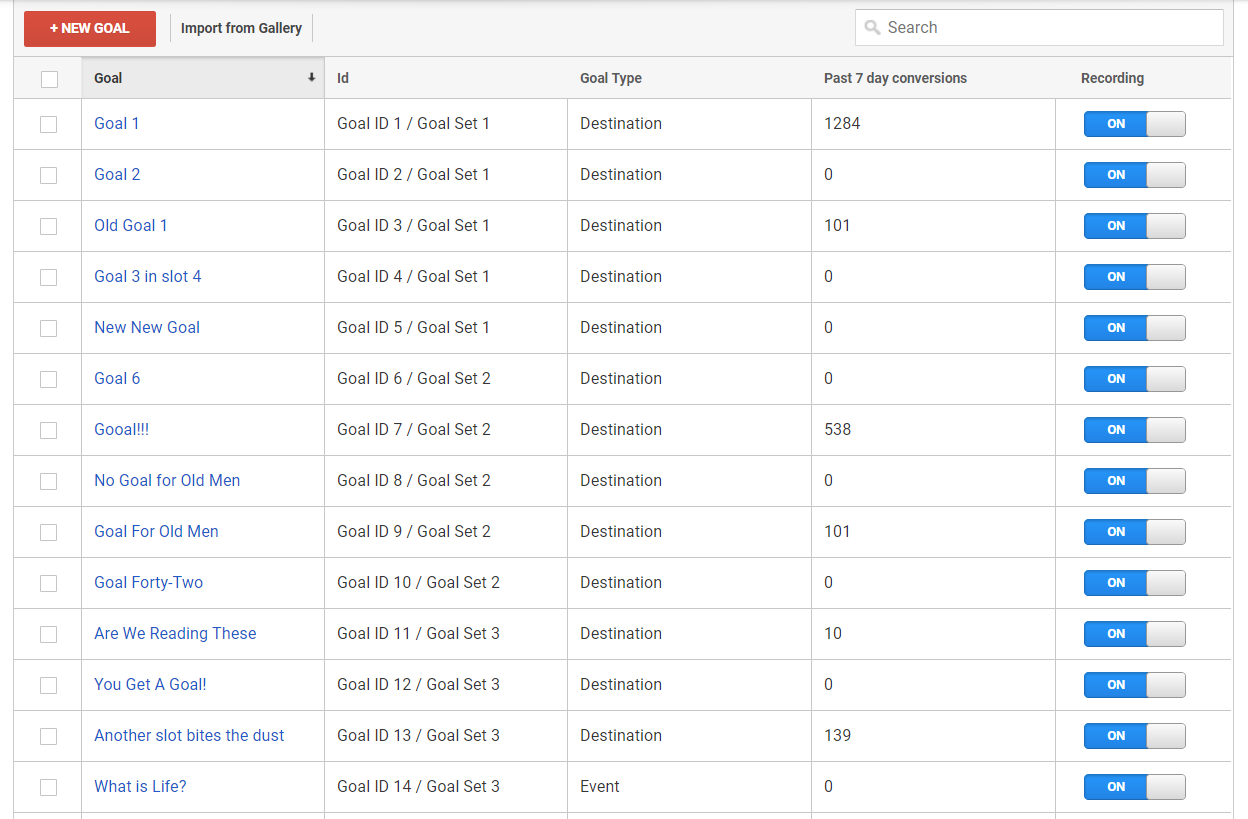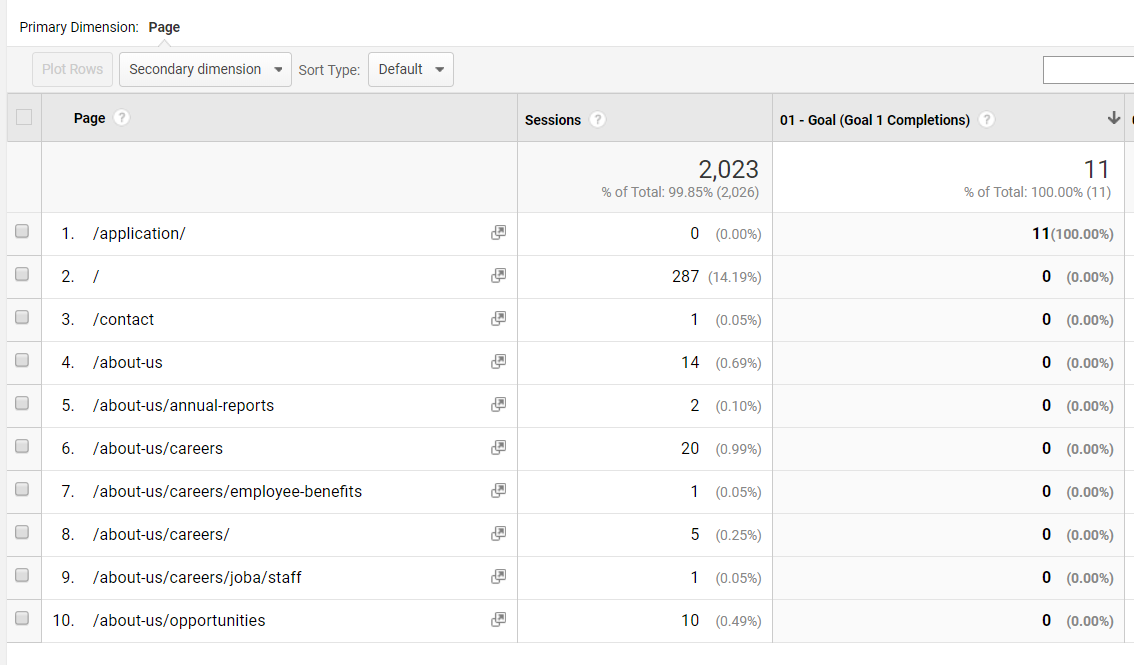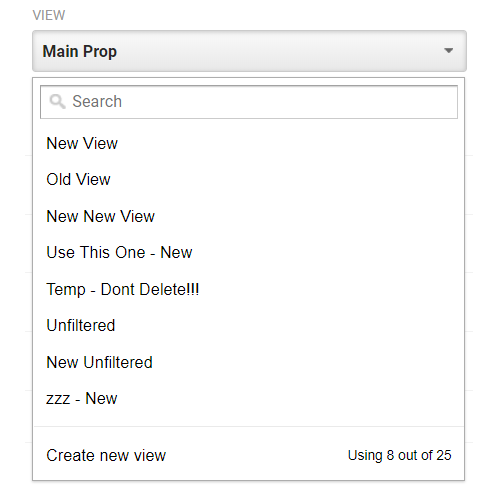5 Quick and Easy Ways To Wreck Your Analytics
Have you ever been tired of your clean data? Has it been too long since something’s been truly broken? Do you find yourself longing for the good old days of data collection fire drills? OF COURSE NOT!!!
If you’re like me, you know that data can be messy. It comes in all shapes and sizes. It’s not always easy to refine. At times, it’s all we can do to keep our data warehouse from turning into an episode of Hoarders: Buried Alive. Below are five issues that I see pop up all the time. These are practices to avoid at all costs… unless you are one of those sadistic types.

5. Goals Gone Wild
Listen, I get it. You get 20 of them. That doesn’t mean you need to use ALL of them. Goals should be used like mustard; sparingly and only when necessary. If every data point on your website is “shouting” then nothing will stand out.

My Advice: Before implementing a goal, ask yourself if it is truly necessary and if it can be recorded and reported on in a better place (i.e. events or eCommerce).
4. Buried Bodies & Code Placement
I’ve seen developers do some wild things with the Google Analytics library. Rolling it in with a myriad of other JS code. Placing it on the bottom of the page. It’s not that it always wrecks GA, but obfuscating or placing GA where it’s not expected can lead to larger problems down the road. Developers to come won’t know where you buried that Google Analytics and they will quickly find themselves in a double tracking situation. Who knows what else might pop up.

My Advice: Follow best practices with your placement. Use Google Tag Manager (or any Tag Manager) if you can, it will save you time and money in the long run. If you’re dealing with developers, ask them really nicely (or bribe them) and give them all the details they need to do the job right on the first try, then check their work.
Published: February 15, 2016
Published: February 9, 2012
3. Don’t Cross the Streams (Mixing Scopes)
Mixing scope within the GA interface is one of those easy yet dangerous things to do. Counting larger containers by their distinct count of smaller ones can lead to all kinds of weird. Let’s say you have a jar of 50 jelly beans. You wouldn’t find the number of jars you had by counting each jelly bean that was in the jar. Sure, each jellybean is associated with a jar but all the jelly beans are in a single jar! Yet we expect GA to work for us like this!

My Advice: Counting goal completions and sessions (session-based) by page (hit-based) leads to some wonky results. Context matters. Always know where you are and what dimensions and metrics work together.
Published: November 30, 2016
2. The Incredible Shrinking Include Filter
Filters on views come with a lot of power. Two of the biggest pitfalls I see have mainly to do with Include filters and filter order. Include filters are the great incisors of Analytics. They hungrily will bite off a chunk of your data and throw out the rest. Subsequent include filters will never see the initial chunk of data that was thrown away. Your include internal traffic filter and your include blog traffic will not give you internal traffic OR people who visited your blog, but rather only internal traffic that also came to the blog.
Filter order is also important. Don’t scrub query parameters first via a filter if you plan on using another filter after that one to capture a parameter as a custom dimension!

My Advice: Read and understand how filters work. And always, always, test new filters in a Test View that mirrors the view you use for Reporting.
Published: June 24, 2011
1. Call Everything “New”
I know it might have seemed like a great idea at the time, but the NEW GA property from 2012 isn’t so new. We all fall into this trap – 10 versions of a Word Doc with NEW, FINAL, and various numbers. Let’s strive to do better.

My Advice: Take even five minutes to call it something, ANYTHING else. What would be better, take the time to truly establish a solid naming convention: One that is strategic, is easily understandable and doesn’t include the word “New”. Conventions are the bedrock upon which or data will stand. Take the time and get it right. You don’t want others living with your bad habits.
Published: February 22, 2016
0. Just Set It & Forget It
Seriously, this is probably the worst thing you can do. Being passive with your data-set is like owning a Vintage 1969 Camaro SS and never washing it or taking it for a spin. What amazing stories can your data tell? If you never look, you’ll never know. AND when you finally do look you won’t know if you can trust what you have because you’ve never taken care of it.
In closing, always try to make choices you will thank yourself for making one year from now. If you hold fast to that idea, you will always be grateful to your former self.


